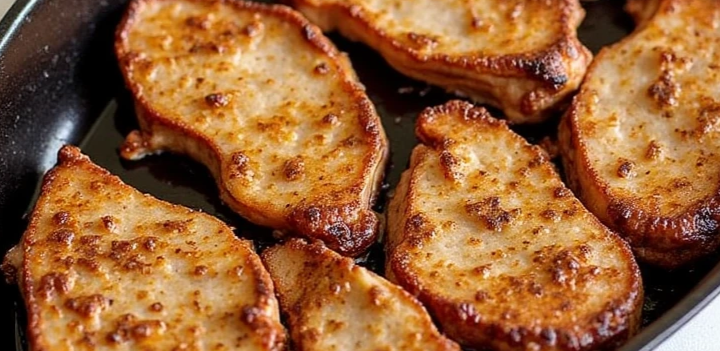Cooking Tri Tip Steak
Cooking Tri Tip Steak: The Ultimate Guide

Arianne Nemna
Tri tip is a triangular cut of beef that comes from the bottom portion of the sirloin, specifically the bottom sirloin subprimal. Its name reflects both its unique shape—broad at one end and tapering to a point—and its anatomical location near the hip of the cow.
This cut usually weighs between 1.5 and 2.5 pounds and has a distinctive two-directional grain pattern, which makes it essential to understand how to slice it properly after cooking.
What Is Tri Tip Steak?
Origin & Cut Description

Depending on the region or the butcher, tri tip may be labeled differently. In Central California, it’s often called Santa Maria steak, a nod to the traditional oak-fired method used there. In the Northeast, you might hear it called Newport steak, while other regions simply refer to it as triangle steak or bottom sirloin roast. If you’re ever unsure, asking your butcher for the bottom sirloin triangle is usually the clearest route.
Why It’s Popular
What makes tri tip so appealing is the combination of rich flavor, tender texture, and reasonable cost. This cut offers a taste profile that sits somewhere between a strip steak and a brisket. It’s meat-forward with natural beefiness and just enough intramuscular fat (marbling) to stay juicy when cooked correctly.
Unlike more premium cuts like ribeye or filet, tri tip is more affordable but still delivers a robust eating experience. For families, dinner parties, or meal prepping, it provides a great balance of taste, yield, and ease of preparation—especially when handled with a bit of care.
Preparing Your Tri Tip
Buying & Butcher Tips
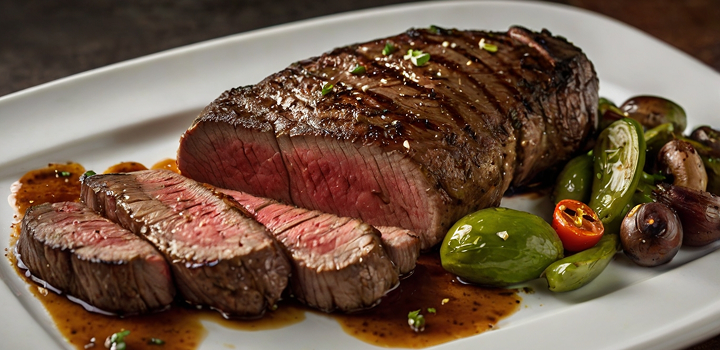
Selecting the right tri tip starts with knowing what to look for at the butcher counter. I always recommend choosing cuts that are graded USDA Choice or Prime, as they tend to have better marbling and tenderness. A good tri tip should have a uniform triangle shape and a fat cap that’s around a quarter-inch thick—just enough to render during cooking without causing flare-ups.
If your local store doesn’t stock tri tip, you can ask specifically for the bottom sirloin triangle. Some butchers may not display it openly, especially on the East Coast or in smaller markets. You can also refer to its wholesale code, NAMP 185D, which helps identify the cut precisely. In some cases, you may be offered a whole untrimmed version, in which case you’ll want to remove any silverskin and lightly trim the fat cap at home.
Seasoning Options
Tri tip benefits immensely from seasoning, and this is where you can really tailor the flavor to your liking. There are two main approaches: dry rubs and marinades.
Here’s how they compare:
| Aspect | Dry Rubs | Marinades |
| Purpose | Build a crust and intensify surface flavor | Infuse deeper layers and tenderize |
| Time Required | 30 minutes to overnight | 2 to 12 hours depending on ingredients |
| Best Cooking Methods | Grilling, oven-roasting, smoking | Skillet, broiling, roasting |
One of the most famous seasoning styles is the Santa Maria rub, which traditionally combines kosher salt, coarse black pepper, garlic powder, and sometimes paprika or cayenne. This classic rub is designed to highlight the beef’s natural flavor without overpowering it.
If you’re looking to change things up, consider global profiles. A chimichurri-inspired rub with oregano and garlic gives a bright, herbal note, while Asian-inspired marinades using soy sauce, sesame oil, ginger, and brown sugar add a deep umami character. Southwestern spice blends with cumin, smoked paprika, and lime zest can also create a bolder, spicier crust ideal for tacos or rice bowls.
Pre Cook Techniques
Before you begin cooking, a few small steps can dramatically affect your results. First, always let the tri tip rest at room temperature for 30 to 60 minutes before applying high heat. This simple step allows for even cooking from edge to center and helps achieve that perfectly pink interior.
If your tri tip comes with a fat cap, lightly scoring it with a sharp knife in a shallow crisscross pattern—no more than an eighth of an inch deep—can help the fat render more effectively and allows seasonings to adhere better.
As for tenderizing, tri tip typically doesn’t require much intervention. Its natural texture is already quite tender when cooked to the right internal temperature. However, if you’re working with a leaner or ungraded cut, marinating it for several hours in a slightly acidic solution can help soften the outer fibers without compromising structure.
Cooking Methods
Grilling Tri Tip
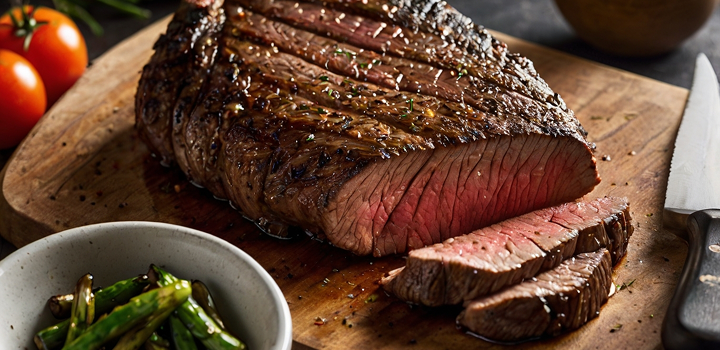
Grilling is one of the most rewarding ways to cook tri tip, especially when aiming for a smoky crust and juicy center. The key lies in managing two heat zones on your grill: direct heat for the initial sear and indirect heat for gentle finishing.
| Heat Zone | Description | Purpose |
| Direct heat | Over open flame or glowing coals | Searing the outside quickly |
| Indirect heat | Offset from flame or coals | Slow, even cooking to target temp |
In traditional Santa Maria-style grilling, the wood of choice is red oak. It burns hot, imparts a distinct flavor, and provides the ideal balance of smoke and fire. If you have access to red oak chunks or chips, use them over a charcoal bed or in a smoker box on a gas grill.
Step-by-step guide for grilling tri tip:
- Start by preheating your grill with one side hot and the other side cool.
- Sear the tri tip over direct heat for about 4 to 5 minutes per side, until a dark crust forms.
- Move the steak to indirect heat, cover the grill, and cook until the internal temperature reaches your desired level (typically 130°F for medium-rare).
- Let it rest for at least 10 minutes before slicing.
Controlling heat and timing is critical here, and an accurate thermometer is your best friend.
Oven Roasting & Broiling
For those without access to a grill, oven roasting provides excellent results—especially when paired with a finishing sear under the broiler or in a skillet. I usually recommend a low-and-slow oven method to gently raise the internal temperature without overcooking the outer layers.
Start by preheating your oven to 225–250°F. Place the tri tip on a wire rack over a sheet pan and roast until it hits about 120–125°F internally. This typically takes 30 to 50 minutes, depending on thickness and your oven’s behavior.
Once you’ve reached that internal temp, you can either finish with a high-heat broil for 2 to 3 minutes per side or quickly sear it in a cast iron skillet. This final step adds texture and caramelization without cooking the meat further inside.
Skillet & Reverse Sear
Cooking tri tip on the stovetop is absolutely doable, especially in a well-seasoned cast iron skillet. For best results, I use the reverse sear method, which flips the traditional logic: low-temp cooking first, then high-temp searing at the end.
Here’s the workflow:
- Begin by slowly roasting the tri tip in the oven (at around 225°F) until the internal temperature is about 120–125°F.
- Remove it from the oven and let it rest briefly.
- Heat a heavy skillet until it’s smoking hot, then sear the meat on all sides for 45 to 60 seconds per side to build a crust.
This method gives you precise control over doneness and avoids gray bands around the edges. The crust forms at the end, so you retain both flavor and color where it counts.
Smoking & Low and Slow
Smoking tri tip transforms it into a deeply flavored, tender centerpiece—but the process takes more patience. The optimal smoking temperature is in the range of 200–250°F. This allows the meat to slowly absorb smoke while gradually approaching your target internal temp.
I prefer hardwoods like red oak or hickory, depending on the flavor intensity you’re after. Use a smoker, pellet grill, or a charcoal grill with offset fire to maintain consistent low heat.
Once the tri tip reaches about 125°F, you can finish it with a quick sear either over hot coals or in a skillet. The goal is to add crust without raising the internal temperature too quickly.
Tools & Equipment Cheat Sheet
Thermometers
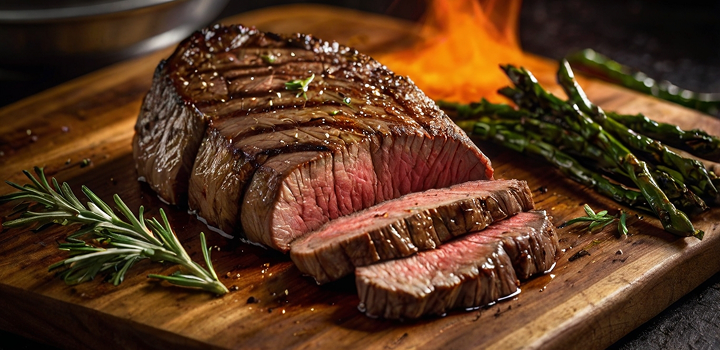
A reliable thermometer is essential for tri tip. Whether you’re aiming for medium-rare or medium, guessing is never as accurate as reading a digital probe.
| Thermometer Type | Best Use Case |
| Instant-read thermometer | Spot-checking during cooking and resting |
| Leave-in probe thermometer | Continuous monitoring, especially in oven/smoker |
Using a thermometer ensures your steak hits the right doneness without overcooking or drying out.
Cast Iron Skillets vs. Grills vs. Smokers
Each cooking surface brings out different qualities in tri tip. Cast iron excels at developing a crust thanks to even surface heat. Grills offer the ideal balance of char and smoke, while smokers infuse deep wood flavor and allow for longer cook times.
| Tool | Strengths | Notes |
| Cast iron | Searing, finishing steps | Preheat thoroughly before use |
| Grill | Direct + indirect heat versatility | Best for traditional preparations |
| Smoker | Low-and-slow, deep smoke infusion | Needs monitoring and longer time |
If you’re cooking indoors, cast iron plus an oven is your best bet. For outdoor use, nothing beats the control and flavor of a two-zone grill.
Wood Selection (Red Oak, Charcoal, Pellets)
When it comes to adding smoke, your choice of fuel matters. Red oak is the signature wood for authentic Santa Maria-style tri tip, producing a bold yet balanced smoke. Charcoal alone can work well too, especially lump charcoal which burns cleaner than briquettes.
If you’re using a pellet grill or smoker, opt for wood pellets made from oak, hickory, or mesquite, depending on how assertive you want the smoke flavor to be. Avoid overly sweet woods like apple or cherry for tri tip—they tend to mask the beef’s natural flavor.
Temperature & Doneness Guide
Target Internal Temperatures

Getting the internal temperature right is the most important part of cooking tri tip. The muscle fibers in this cut respond distinctly to different levels of heat, so even a 5-degree difference can change the eating experience. I always recommend using a thermometer for accuracy rather than relying on touch or time alone.
| Doneness Level | Final Temp to Pull From Heat | Final Temp After Resting |
| Rare | 120°F | 125–127°F |
| Medium-rare | 130°F | 135–137°F |
| Medium | 140°F | 145–147°F |
For tri tip, medium-rare is the sweet spot—it keeps the center pink and juicy while allowing the fat to render properly. Cooking beyond medium can still work, but the texture begins to firm up noticeably. If you’re serving a crowd, I recommend pulling the meat at 130°F and letting carryover cooking do the rest.
Carry Over Cooking & Resting
After removing tri tip from heat, it’s critical to let it rest before slicing. This isn’t just about letting it cool—during the rest period, internal juices redistribute, and the meat finishes cooking through a process called carryover cooking.
The temperature will typically rise by about 5°F, sometimes more if the meat is thick or if it was cooked over intense heat. For example, if you pull the meat at 130°F, expect it to finish around 135°F, which lands right in the medium-rare range.
As for resting time, I recommend:
- 10 to 15 minutes for smaller cuts or oven-roasted tri tip
- Up to 20 minutes if you smoked or grilled a large tri tip with a thick fat cap
During this time, loosely tent the meat with foil. Don’t wrap it tightly, as that can trap steam and compromise the crust.
Recipes & Variations
Classic Santa Maria Style
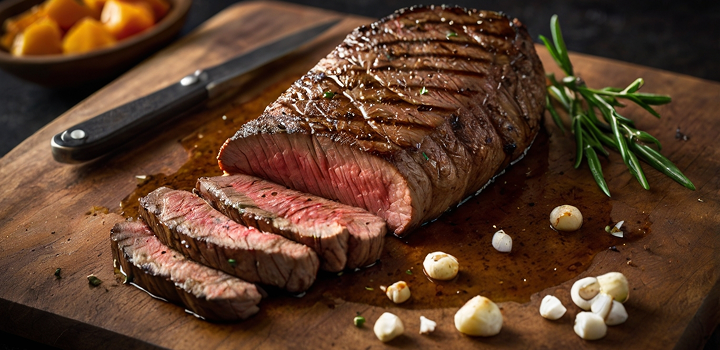
The most iconic way to prepare tri tip is the Santa Maria-style grill, which originated on California’s Central Coast. It combines a dry spice rub and oak wood smoke for bold, rustic flavor. The rub is typically made with coarse salt, cracked black pepper, garlic powder, and a pinch of cayenne. Once applied, the steak is grilled over red oak coals, flipped regularly, and cooked to medium-rare.
The result is a smoky, crusty exterior and a juicy pink interior that slices beautifully across the grain. Traditionally, it’s served with pinquito beans, grilled bread, and salsa—but it’s equally good sliced into sandwiches or salads.
Oven Baked with Rubs or Marinades
Tri tip also adapts well to oven preparation, especially when paired with herb crusts or marinades that complement the roast-style cook. You can coat the surface in a cracked pepper and rosemary crust for a more formal presentation, or use a soy-ginger marinade to infuse Asian flavors before roasting.
To execute this in the oven, start low and slow at 225–250°F until the internal temperature is 120–125°F. Then finish under the broiler or in a hot skillet for 2 to 3 minutes per side. Rest before slicing, and serve with the pan juices or a quick sauce made from the drippings.
Global Twists
Tri tip is a blank canvas for international flavor. In Argentinian cuisine, it’s common to serve it with a bold chimichurri sauce—a raw herb blend of parsley, garlic, vinegar, and olive oil that cuts through the richness of the meat.
Another standout is a bulgogi-style tri tip, inspired by Korean barbecue. This involves marinating the steak in a mixture of soy sauce, sesame oil, brown sugar, grated pear, garlic, and ginger. After several hours of marination, the tri tip can be grilled or seared, producing a glossy, flavorful crust.
Low and Slow or Smoked
Smoking tri tip allows deeper flavor to develop over time. Whether you use a pellet grill or a charcoal setup, keep your temps between 200–250°F, and let the tri tip absorb smoke until it reaches 125°F internally. Then, either crank the heat or move it to a hot zone to sear and finish.
This method creates a smoke ring and delivers a more barbecue-like texture. It’s ideal for slicing thin and serving with bold sides like vinegar slaw or spicy beans.
15+Frequently Asked Questions (FAQ)
1. What is the best internal temperature for tri tip steak?
For the juiciest result, medium-rare is ideal—remove the steak from heat at 130°F and let it rest until it reaches 135°F. This preserves tenderness and flavor without overcooking.
2. How long should I rest tri tip before slicing?
Let it rest for at least 10–15 minutes. This gives the juices time to redistribute and ensures the meat stays moist when sliced. For larger cuts or smoked tri tip, a 20-minute rest is even better.
3. Do I need to marinate tri tip or is a dry rub enough?
A dry rub is usually enough because tri tip is naturally flavorful and tender. However, marinating can add depth and help tenderize leaner cuts, especially if you’re planning to cook beyond medium.
4. Can I cook tri tip in an air fryer?
While not traditional, it’s possible to cook tri tip in an air fryer. Use a lower temperature (around 325°F) and check frequently with a thermometer. Sear the surface beforehand or after cooking for best texture.
5. What’s the correct way to slice tri tip?
Always slice against the grain. Since tri tip has two distinct grain directions, you may need to rotate the steak halfway through slicing. This helps avoid chewiness and improves mouthfeel.
6. Is tri tip the same as brisket or sirloin?
No, tri tip comes from the bottom of the sirloin and is leaner and more tender than brisket. While it shares part of the name with sirloin, its grain structure and cooking methods are unique.
7. Can I freeze raw or cooked tri tip?
Yes, both raw and cooked tri tip freeze well. Wrap tightly in plastic wrap and foil, then store in a freezer-safe bag. Use within 3 months for best quality. Defrost overnight in the fridge before reheating or cooking.
8. How do I reheat leftover tri tip without drying it out?
Reheat slowly in a low oven (around 275°F), covered with foil. You can add a splash of broth or water to keep moisture in. Avoid microwaving, as it tends to toughen the meat.
9. Can I cook tri tip straight from the fridge?
It’s best to let the meat sit at room temperature for 30–60 minutes before cooking. This helps it cook more evenly and prevents overcooking the outside before the center reaches temperature.
10. What kind of wood should I use to smoke tri tip?
Red oak is the traditional choice for Santa Maria-style tri tip. If unavailable, hickory, mesquite, or pecan also work well. Avoid overly sweet woods like apple for this cut.
11. How do I know when tri tip is done without cutting it?
Use a meat thermometer to check the thickest part of the cut. Don’t rely on timing or texture alone, as tri tip can look cooked on the outside while still being raw inside.
12. Can tri tip be cooked well done without drying out?
It’s possible, but tricky. To cook well done without drying, use a marinade to add moisture and cook slowly at low heat. Baste regularly and consider wrapping it partway through cooking.
13. Is tri tip good for tacos or sandwiches?
Absolutely. Once cooked and rested, tri tip slices beautifully into thin strips for tacos, sandwiches, or rice bowls. Try it with chimichurri or pickled onions for contrast.
14. What sauces go well with tri tip?
Chimichurri, peppercorn sauce, horseradish cream, or garlic butter all pair well. The meat’s bold flavor can handle both tangy and creamy accompaniments.
15. What should I serve with tri tip steak?
Grilled vegetables, roasted potatoes, salsa, slaw, or pinquito beans are great companions. For a full Santa Maria-style plate, serve it with salsa fresca, garlic bread, and a green salad.


